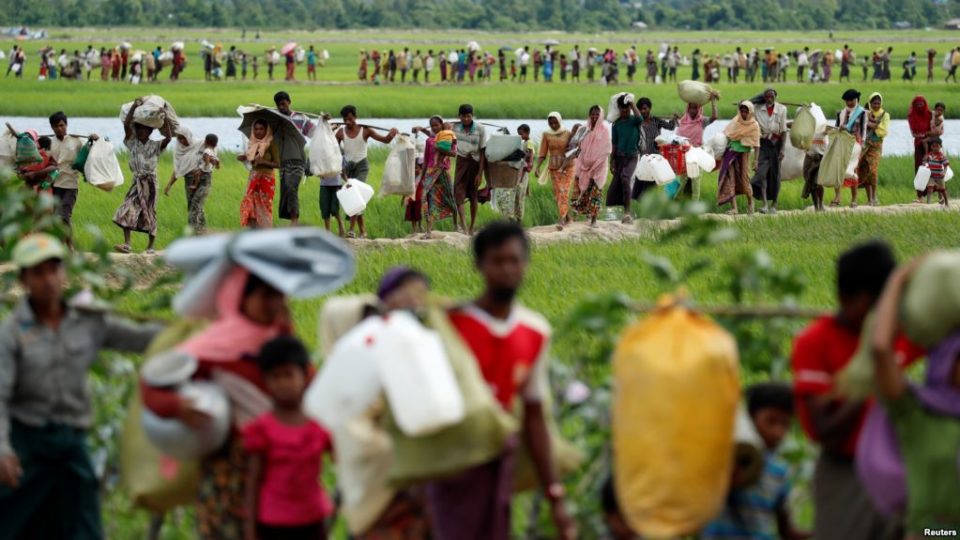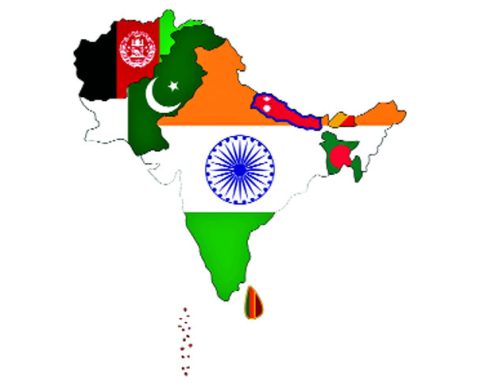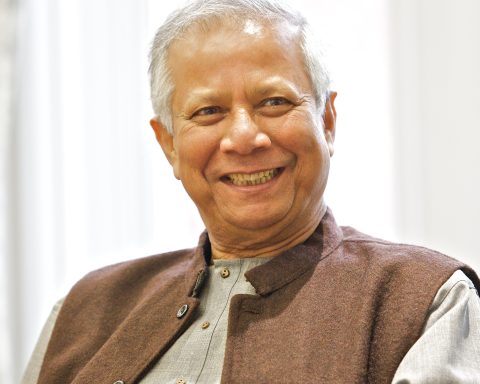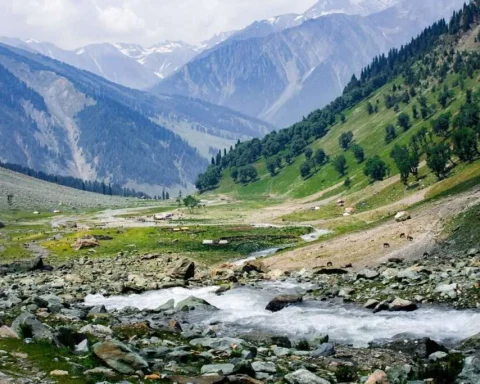Bordered by the Himalayan Mountains to the north and the Indian Ocean to the south, South Asia is home to a quarter of the world’s total population, making it one of the world’s most densely populated regions. All other countries except Afghanistan share a land route with India, thus India’s economic and military dominance in the region is greater. Forgetting the strained relations between themselves, the bitter experiences of the past, the countries of South Asia are being welcomed anew in the international arena due to their geographical location. The global influence of the United States and China’s entry into South Asia have changed the politics of the region.
In terms of peace and security, there are various sources of insecurity, which threaten the peace and security of the region. As South Asia is the most densely populated and impoverished region in the world, peace and security in the region is naturally difficult.
The network of terrorism is spreading rapidly in South Asia which is one of the causes of conflict and insecurity in the region. Some of the world’s most notorious terrorist groups such as Kuki-Chin, LET, HUM, ULFA, LITE and several pro-independence terrorist forces are based in this region. This terrorism has influenced the politics of South Asia for ages, especially the Kashmir issue, Hindu Muslim riots in India and national drug crimes.
South Asia is one of the most densely populated regions in the world, with a quarter of the world’s population living here. Amidst this huge population, some South Asian countries are plagued with refugee problems. South Asia has the highest number of asylum seekers after Europe. The refugee problem is a major issue in the security of India, Pakistan, and Bangladesh. India has a large number of refugees from neighboring countries and Afghan refugees from Pakistan. The biggest obstacle for Bangladesh at present is the refugee problem. A large number of Bangladeshi refugees have entered from neighboring Myanmar at various times. As recent Rohingya refugees are more than the past, the challenge is also a cause for concern for us. In 2017, nearly 700,000 Rohingya refugees sought refuge in Bangladesh to escape military persecution in Myanmar. In 2023, the number of refugees increased to more than 12 lakh. This refugee problem is a threat not only to Bangladesh but also to India and other South Asian countries. Hosting and planning resettlement is a major challenge for any country hosting such a large number of refugees. The refugee problem is vital for the peace and security of all countries. These Rohingya refugees from Myanmar and other ethnic minorities are a threat to peace and security in the whole of South Asia.

Cold relations have existed between India and Pakistan since the partition of the country. The power struggle has widened the distance between the two countries. The names of India and Pakistan come before the powerful countries of South Asia. There have been several wars between the two countries over various issues, and the two neighboring countries are currently at a standstill. The role of these two countries is very important in establishing lasting peace and security in South Asia. But this India-Pakistan conflict is acting as a reverse threat, the root of Pakistan India’s enmity is the Kashmir issue, which is why the issue of Kashmir will be the first step for Pakistan to solve India’s problem. Kashmir is an important part for the peace and security of entire South Asia. On 5 August 2019, the central government revoked the special constitutional status of Indian-administered Jammu and Kashmir. The tension surrounding Kashmir has increased since the announcement of the verdict. The reaction in Pakistan was even harsher than before, with some recent steps taken by India. Pakistan has announced the cancellation of special status to Occupied Jammu and Kashmir and the suspension of all bilateral trade with India, as well as the reduction of diplomatic relations with the country. Train services were suspended in both countries and ambassadors were evacuated. There is also a massive exchange of fire between the armies of the two countries on the India-Pakistan border. 5 Indian soldiers and 3 Pakistani soldiers were killed. Since then the tension between the two countries is still ongoing. Apart from the Kashmir crisis, there are other reasons for the Pakistan-India conflict, which pose a threat to the peace and security of the entire South Asia. Pakistan’s China-centric foreign policy is also seen as a threat to India’s security. Since the border tensions at Doklam in 2017, India-China relations have been cold. As a result of the enrichment of nuclear power between Pakistan and India, the conflict between these two countries has become a threat to the peace and security of the entire region. The nuclear rivalry between the two countries is increasing border tensions and above all threatening the peace and stability of the subcontinent.
South Asian countries have long been trapped in a narcotic scourge. Liquor, gaja, yaba, heroin are being freely transported from one country to another from bordering countries. Based on these, various drug societies are being developed, by which various crimes are being committed. This international crime syndicate is affecting the peace and security of countries. Apart from drugs, South Asian countries are also involved in illegal arms smuggling and human trafficking. This drug crime is not only a threat to the peace and security of South Asia but also an initiative for Asia.
Recently, China has become a threat to India’s border conflict and regional peace and security. Also, border disputes between India, Pakistan, Bangladesh, Nepal and Bhutan can be observed. Meanwhile, Nepal has changed its national map due to border issues and watershed with India and the changed map has been constitutionally approved by the parliament. Due to this, Nepal’s relationship with India has deteriorated. South Asian countries often raise complaints against India over border issues.
Global climate change is alarming and cause for concern for South Asia. It is estimated that by 2050 the entire Maldives and the southern parts of Sri Lanka, India and Bangladesh are at risk of being submerged under water. Hence, climate change is a pressing issue for South Asia that will have dire implications for peace and security in the region.
Undoubtedly, South Asia is currently considered as an important region of the world for geographical and strategic reasons. Located between Southeast Asia and Central Asia, South Asia is blessed with the Indian Ocean and vast natural resources. The importance of this ocean in the international arena is not only of resources but also of power. China maintains military bases here and conducts regular espionage through submarines. The Indian government has discussed China’s unacceptable activities and is regularly increasing military preparedness in the region. The US does not want emerging superpower China to control the region. Therefore, the United States is also joining the control of this region by making various bilateral agreements with India.
The problem of poverty is also identified as one of the obstacles to peace and security in South Asia. Especially, most of the world’s poor people live in the South Asian country of India. Besides, poverty is identified as a national problem in Bangladesh, Nepal, Bhutan and Pakistan.
South Asia is one of the most important regions of the world historically, geographically and demographically. Although there are various threats to the peace and security of the region, if we can end them, I think that the future of South Asia will stand tall as a particularly strong region. Therefore, the establishment of peace in this region is very important.













